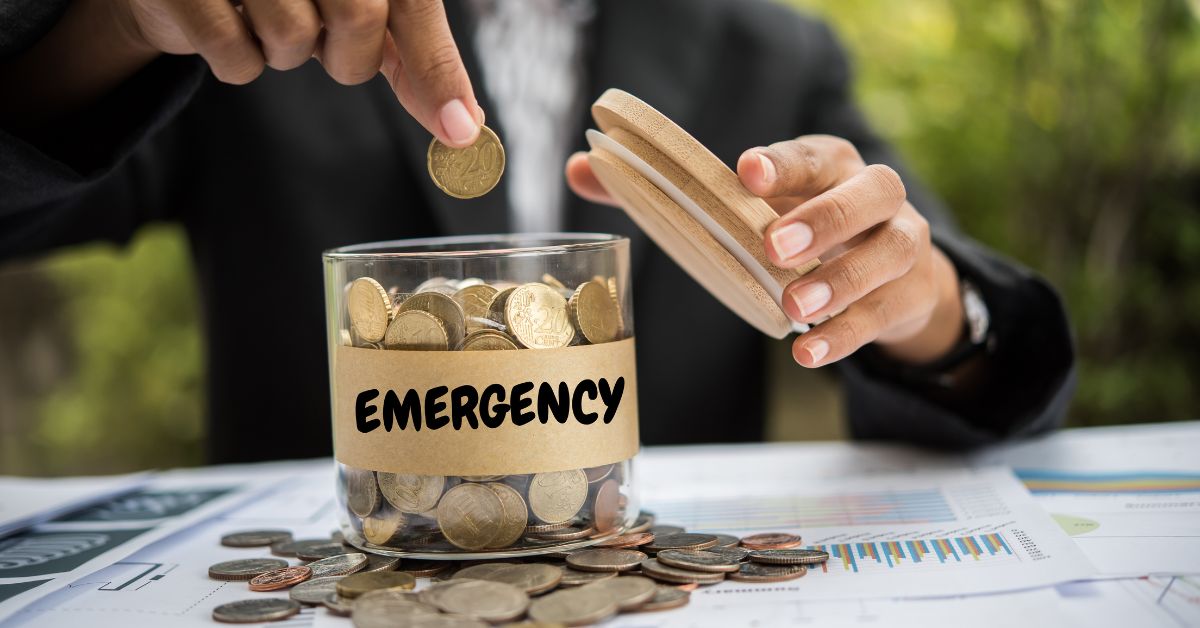Building an emergency fund while paying off debt is a tricky balance. Life is unpredictable, and an unexpected expense can throw off even the most careful financial plans. This is why having an emergency fund is so important – it’s your financial safety net when life happens. But if you’re also dealing with debt, the question of how to juggle paying it off while building an emergency fund can feel overwhelming.
The good news? It’s possible to do both. By using the right strategies and being intentional with your money, you can build an emergency fund and tackle debt. In this blog, we’ll provide steps to help you manage both priorities without feeling too financially strained.
Understanding the importance of both
An emergency fund acts as a buffer for unexpected expenses, such as car repairs, medical bills, or even job loss. Without one, you may find yourself relying on credit cards or loans, which only worsens debt. Building a fund with a few months' worth of living expenses means having peace of mind, knowing you won’t be caught off guard by life’s surprises.
On the other hand, debt repayment—especially high-interest debt like credit cards—can weigh heavily on your financial health. The longer you carry debt, the more you pay in interest, making it harder to get ahead. Delaying debt repayment only increases the amount you owe over time. However, while going to the other extreme and attempting to pay off all your debt at once might feel like a way to reduce financial stress, without an emergency fund, it will only worsen things if the unexpected should happen. The goal is to make progress in both areas so you don’t end up prioritising one at the expense of the other.
Start small, but be consistent
Starting small can make building an emergency fund while paying off debt more manageable. You don’t need to save a large sum overnight; instead, ensure you contribute consistent amounts. By setting realistic, achievable goals, you can gradually build your emergency fund buffer while still addressing your debt.
For example, aim to set aside a small percentage of your income (e.g. 5 per cent) into your emergency fund. This might not seem like much at first, but those contributions will grow over time.
The key is to develop the habit of saving. Once this becomes part of your routine, you’ll find it easier to increase the amount when your circumstances improve, such as after a pay rise or when you’ve cleared a portion of your debt.
Try incorporating these small contributions into your budget using our free budget planner.
Prioritise high-interest debt
Not all debt is created equal, and high-interest debt (like credit cards) can significantly harm your financial health. The interest on these debts compounds quickly, making it difficult to pay off the principal balance. Therefore, it’s essential to prioritise paying down high-interest debt while also contributing to your emergency fund.
Focusing on high-interest debt first can reduce the amount of money lost to interest payments. However, don’t neglect your emergency fund entirely while paying off debt. Even a small monthly contribution can make a difference when faced with an unexpected expense. Having some savings can help prevent you from falling back on credit cards or loans, which would only increase your debt.
To learn more about high-interest debt and helpful strategies, read our blog.
Automate savings and debt payments
Automating the process is one of the easiest ways to ensure you’re being consistent in both saving and debt repayment. By setting up automatic transfers, you’re taking the pressure off remembering to save or make monthly payments. Automation helps build financial discipline, ensuring your goals are met even if life gets busy.
Start by scheduling automatic transfers into your emergency fund on payday. Whether it’s $50 or $100 a month - every little bit counts - the goal is to make saving a habit that happens without any extra effort.
The same goes for debt repayments. Many lenders and credit card companies allow you to automate minimum payments or set a specific amount to be withdrawn monthly. By doing this, you avoid late fees and ensure that you're chipping away at your debt.
Automation not only simplifies your finances but also removes the temptation to spend the money you’d otherwise allocate to savings or debt.
Cut back and reallocate savings
One of the most effective strategies for freeing up money for savings and debt repayment is to look at your spending habits more closely. Identifying areas where you can cut back—even temporarily—allows you to reallocate those savings towards more pressing financial goals.
Start by reviewing your monthly expenses. Are there any subscriptions you don’t use regularly, or are you overspending on dining out or entertainment? By making small sacrifices, such as cooking at home more often or cancelling unused subscriptions, you can free up additional funds to put towards your emergency fund or debt repayments.
Think of this approach as reallocation rather than restriction. You’re redirecting money being spent unconsciously towards goals that will provide long-term security.
Revisit and adjust your budget regularly
Financial planning isn’t a ‘set and forget’ situation. As life changes, your budget should evolve, too. Regularly revisiting and adjusting your budget allows you to stay on track and balance your priorities.
Set aside time every few months to review your finances. Are you making progress with your emergency fund? Are you managing to pay down your debt at a reasonable pace? If you’ve saved more or reduced your debt quicker than expected, consider redirecting those funds towards either debt repayment or bolstering your savings.
Financial flexibility is key. Life will throw surprises your way, and being open to adjusting your plan ensures you don’t get discouraged. A successful budget should adapt to your changing needs and goals.
Let the Inovayt team help grow your emergency fund and pay down debt
Building an emergency fund while paying off debt is a balancing act, but with consistency, strategy, and a little flexibility, it’s definitely achievable. By starting small, prioritising high-interest debt, automating your finances, cutting back on unnecessary expenses, and regularly revisiting your budget, you can make steady progress on both fronts.
Remember, financial security isn’t about quick fixes. With patience and dedication, you can pay down your debt and build a financial safety net that gives you peace of mind. Remember to stay focused, adjust as needed, and celebrate small wins. If you need assistance paying down debt or tweaking your financial strategy, get in touch with the Inovayt team today.


